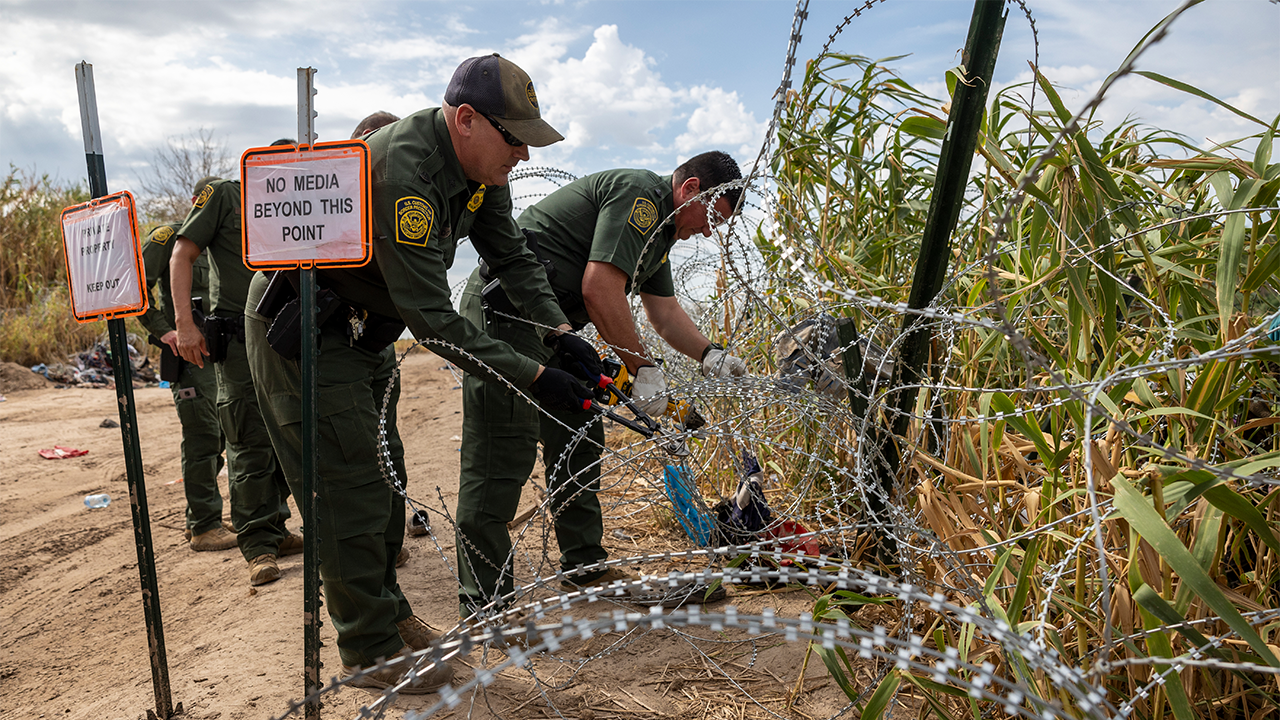Mississippi
Mississippi Sports Hall of Fame will induct eight new members Saturday

The Mississippi Sports Hall of Fame will induct eight new members in ceremonies Saturday night at the Jackson Convention Center. The MSHOF Class of 2023 is a diverse one, which, as usual, includes high achieving athletes and coaches.
Below, the eight inductees are profiled, in alphabetical order.
Jeff Herrod, football
Full name: Jeff Sylvester Herrod
Age: 57
Birthplace: Birmingham
College: Ole Miss (1984-87), All-SEC linebacker 1986-87, Ole Miss Team of the Century. Leading tackler in Ole Miss history.
Professional: 11 years in NFL, 10 with Indianapolis Colts. Led Colts in tackles for seven seasons.
Did you know: Herrod was lightly recruited out of high school and Ole Miss was his only Division I offer. He planned to enlist in the U.S. Marines until receiving a late scholarship offer from Ole Miss coach Billy Brewer. He was inducted into the Alabama Sports Hall of Fame in 2017.
Crowning achievement: Herrod, with 528 tackles in his Ole Miss career, is the second leading tackler in Southeastern Conference history behind Tennessee’s Andy Spiva.

Paul Maholm, baseball
Full name: Paul Gurner Maholm
Age: 43
Birthplace: Greenwood (grew up in Holly Springs)
Lives: Hattiesburg
College: Mississippi State (2001-03). A left-handed pitcher, Maholm is one of the most accomplished pitchers in Diamond Dog history with a 27-10 record and 273 strikeouts in 312 innings. Made 46 appearances, 44 starts. Was a freshman All American and All SEC as a sophomore and junior.
Professional: Maholm was the eighth overall pick of the 2003 MLB Draft. Drafted by the Pittsburgh Pirates, Maholm remains the third highest draft pick in MSU baseball history. Played for four Major League teams (Pirates, Cubs, Braves and Dodgers) over 10 seasons at baseball’s highest level, earning $27 million over that period.
Did you know? Maholm declined a signing bonus from the Minnesota Twins to attend Mississippi State, then signed a $2.2 million bonus after three years as a Bulldog. An avid golfer, Maholm is formerly the part owner of the Hattiesburg Country Club and competes at the amateur level.
Crowning achievement: The ace of State’s staff for all three of his Bulldog seasons, Maholm was inducted into the Ron Polk Ring of Honor in 2021.

John Mangum, football
Full name: John Wayne Mangum Jr.
Age: 56
Birthplace: Jackson (grew up in Magee)
Lives: Flowood
College: Alabama (1986-89). Hard-hitting defensive back recruited to Alabama after being named Mississippi’s high school player of the year at Magee. Recruited by Mississippi Sports Hall of Famer Ray Perkins. Mangum holds the Crimson Tide career record for passes broken up. His 16 career pass interceptions rank second in Alabama history.
Professional: Drafted in the sixth round by the Chicago Bears, Mangum played nine seasons in the Windy City, totaling 306 career tackles, 4.5 sacks and five interceptions.
Did you know: Mangum is part of one of Mississippi’s most athletic families. His father, John Wayne Mangum Sr., was a standout defensive tackle for some of the bet defenses in Southern Miss history and then played for the Boston Patriots in the American Football League. His younger brother Kris was an outstanding tight end at Ole Miss and in the NFL. His son, Jake, is one of the all-time baseball heroes at Mississippi State and currently plays for at the Class AAA level in the Miami Marlins organization.
Crowning achievement: Listed at a smallish 5 feet, 10 inches and 190 pounds, Mangum nevertheless was one of the most productive defensive backs in Alabama’s proud football history and a highly productive NFL cornerback and safety for nine seasons.

Jim Page, baseball (player and coach)
Full name: James Jeffrey Page
Age: 60
Birthplace: Woodbridge, Va.
Lives: Flowood
College: Millsaps
Player: Pitched and played third base for the Millsaps Majors (1981-85). In his senior season, Page batted a school record .487. He was his team’s MVP both as a sophomore and as a senior.
Coach: In 34 seasons at Millsaps, Page has achieved a record of 837-577-3 and has been named conference coach of the year eight times. His teams have won multiple conference championships, were ranked No. 1 in the nation in 2009, and reached the NCAA D-III World Series in 2013. During Page’s tenure, he has also coached 30 All-South Region players, 11 Conference Players of the Year, 10 American Baseball Coaches’ All-Americans, seven D-3baseball.com All-Americans and five Conference Pitchers of the Year. In total, eight of his players have gone on to play professionally.
Did you know: Nationally renowned as a hitting instructor, Page has contributed greatly to youth baseball in the mid-Mississippi area with his annual baseball camps that have provided training for literally thousands of Jackson-area youngsters.
Crowning achievement: Page would tell you it comes with his induction into the Mississippi Sports Hall of Fame. Said Page: “I am beyond humbled to join the greats like Will Clark, Harper Davis, Claude Passeau, Walter Payton, Jerry Rice and so many others. It’s beyond special, I can’t even begin to describe what it means to me.”

Tony Rosetti, world champion marksman
Full name: Tony J. Rosetti, Jr.
Age: 77
Birthplace: Biloxi
Lives: West Point
College: Ole Miss, competed and won national intercollegiate championships for the Ole Miss ROTC rifle team.
Military: When he wasn’t serving in Vietnam, Rosetti won several international shooting championships while in the U.S. Army (1964-71).
Team USA: Competing for Team USA in skeet shooting in the 1971 Pan American Games, Rosetti won a gold medal in team competition and a silver medal in the individual competition. In 1972, Rosetti competed in the Munich Olympics.
Did you know: Rosetti, who began shooting at age 11, is the first marksman selected for induction into the Mississippi Sports Hall of Fame. Also an expert golfer, Rosetti inherited his hand-eye coordination from his parents. His father played baseball at Ole Miss and his mother won championships as an amateur golfer.
Crowning achievement: Hard to say, Rosetti has achieved so much in shooting sports, winning international skeet shooting championships and setting national records. Perhaps this: In making the U.S. Olympic team in 1972, Rosetti set a national record, hitting 294 out of a possible 300 targets during the pressure-packed, three-day competition.

Carol Ross, basketball (player and coach)
Full name: Carol Ross
Age: 64
Birthplace: Oakland, MS
Lives: Oxford
College player: When she finished her four-year Ole Miss career (1977-81), she was one of only two players to have achieved more than 1,000 points, 500 assists and 250 steals. When the Southeastern Conference held its first-ever SEC Women’s Basketball Tournament, Ross made the first-ever SEC All-Tournament team. Helped Ole Miss to 97 victories over her four seasons, the last three of which she played for Mississippi Sports Hall of Famer Van Chancellor.
College coach: Ross remains the winningest coach in school history at Florida with a 247-121 (.671) record. During her four-year run at Ole Miss, Ross compiled a 77-50 (.606) record and guided the Lady Rebels to three NCAA Tournaments and a WNIT appearance. At Florida and Ole Miss combined, Ross coached a total of 27 All-SEC first team players.
Professional coach: Ross spent three seasons from 2012-14 as head coach of the Los Angeles Sparks of the WNBA. Her teams won 58 games and won 32. In 2012, she was voted WNBA Coach of the Year.
Did you know: Ross has served on the Board of Directors of the American Cancer Society and Coaches Against Cancer.
Crowning achievement: In 2012 Ross took over a Los Angeles Sparks team that had finished 15-19 the year before. Under Ross, the Sparks improved to 24-10, made the playoffs and she was named WNBA Coach of the Year in her first season as a WNBA head coach.

Patrick Surtain, football
Full name: Patrick Frank Surtain Sr.
Age: 47
Birthplace: New Orleans
Lives: Tallahassee, Fla.
College: A high school quarterback at Edna Karr High School in New Orleans, Surtain became one of the greatest defensive backs in Southern Miss history, a true shut-down cornerback (1994-97). Surtain led Conference USA in interceptions with six in both his junior and senior seasons when he was first-team all-conference. As a senior, he was named CUSA Defensive Player of the Year, helping the Golden Eagles to a 9-3 record (6-0 in the league) and a 41-7 victory over Pittsburgh in the Liberty Bowl.
Professional: Drafted in the second round (44th overall pick) by the Miami Dolphins, Surtain became a three-time Pro Bowler and a first team All-Pro in 2002. After seven seasons with the Dolphins, he played four more for the Kansas City Chiefs before retiring in 2008. He finished his NFL career with 37 pass interceptions.
Did you know: In 2016, Surtain became the coach at American Heritage High School in Plantation, Fla., where he coached his son, Patrick Surtain II, one of the nation’s most highly recruited high school players, who went on to become an All American at Alabama and the ninth overall pick of the 2021 NFL Draft by the Denver Broncos. Patrick Surtain Sr. now coaches defensive backs at Florida State.
Crowning achievement: As a college player, he will remembered as one of the greatest defensive players in Southern Miss history. As a pro, in 2002, Surtain made first team All Pro, meaning that he was judged one of the best two cornerbacks in all of professional football.

Lewis Tillman, football
Full name: Lewis Darnell Tillman
Age: 57
Birthplace: Oklahoma City (grew up in Hazlehurst)
Lives: Dallas
College: At Jackson State (1985-88), Tillman was the offensive star on four consecutive SWAC championship teams and a two-time All-American who broke several of Walter Payton’s college rushing records. Tillman was a three-time All-SWAC running back and the 1987 SWAC Player of the Year. He played in 43 career games, running for 3,989 yards and 30 touchdowns.
Professional: Drafted in the fourth round by the New York Giants, Tillman played five years for the Giants and two more for the Chicago Bears. He won a Super Bowl ring in 1991 with the Giants and was later teammates with fellow Class of 2023 MSHOF inductee John Mangum with the Bears. For his NFL career, Tillman ran for 2,383 yards and 12 touchdowns.
Did you know: In the famous Jackson State-Southern Miss game of 1987, Tillman’s Tigers lost 17-7 but Tillman out-gained the entire Golden Eagle team. He rushed for 177 yards, more than USM gained with a freshman named Brett Favre at quarterback.
Crowning achievement: Tillman broke both the single season and career rushing records of Walter Payton at Jackson State. What more can you say?
The Mississippi Sports Hall of Fame will host events Friday and Saturday at various sites in the Jackson area. All information, including how to obtain tickets, can be found by clicking here.

Mississippi
Minor earthquake recorded in Mississippi on Thanksgiving

MADISON COUNTY, Miss. (WJTV) – A minor earthquake was recorded in Mississippi early Thanksgiving morning.
According to the United States Geological Survey (USGS), the 2.5-magnitude earthquake occurred southeast of Canton near the Ross Barnett Reservoir around 1:48 a.m. on Thursday, November 28.
Officials with the Michigan Technological University said earthquakes below 2.5-magnitude are “generally not felt.” So far, there are no reports of any damage in Madison County.
The last earthquake that occurred in Madison County was a 2.8-magnitude earthquake in 2019.
Mississippi
Thanksgiving on Mississippi Public Broadcasting Think Radio, set to air on Thursday, November 28th

MISSISSIPPI (KTVE/KARD) — For Thanksgiving, on Thursday, November 28, 2024, the Mississippi Public Broadcasting Radio will air a special programming.
Photo courtesy of Mississippi Public Broadcasting
According to officials, “Turkey Confidential” and “Feasting with the Great American Songbook: An Afterglow Thanksgiving Special” will run from 9 a.m. to 1 p.m. Francis Lam will be taking calls and help those in need of Thanksgiving cooking tips for the biggest cooking day of the year.
According to officals, “Feasting with the Great American Songbook: An Afterglow Thanksgiving Special” will explore classic jazz and popular songs about food by singers like Louis Armstrong, Louis Jordan, and Fats Waller, perfect for listening while sitting at the table.
Mississippi
Southeast Mississippi Christmas Parades 2024 | WKRG.com

MISSISSIPPI (WKRG) — It’s beginning to look a lot like Christmas on the Gulf Coast and that means Santa Claus will be heading to town for multiple parades around the area.
WKRG has compiled a list of Christmas parades coming to Southeast Mississippi.
Christmas on the Water — Biloxi
- Dec. 7
- 6 p.m.
- Begins at Biloxi Lighthouse and will go past the Golden Nugget
Lucedale Christmas Parade
-

 Science1 week ago
Science1 week agoTrump nominates Dr. Oz to head Medicare and Medicaid and help take on 'illness industrial complex'
-
/cdn.vox-cdn.com/uploads/chorus_asset/file/25739950/247386_Elon_Musk_Open_AI_CVirginia.jpg)
/cdn.vox-cdn.com/uploads/chorus_asset/file/25739950/247386_Elon_Musk_Open_AI_CVirginia.jpg) Technology1 week ago
Technology1 week agoInside Elon Musk’s messy breakup with OpenAI
-

 Health5 days ago
Health5 days agoHoliday gatherings can lead to stress eating: Try these 5 tips to control it
-

 Health3 days ago
Health3 days agoCheekyMD Offers Needle-Free GLP-1s | Woman's World
-

 Science2 days ago
Science2 days agoDespite warnings from bird flu experts, it's business as usual in California dairy country
-

 Technology2 days ago
Technology2 days agoLost access? Here’s how to reclaim your Facebook account
-

 Science1 week ago
Science1 week agoAlameda County child believed to be latest case of bird flu; source unknown
-

 Sports1 week ago
Sports1 week agoBehind Comcast's big TV deal: a bleak picture for once mighty cable industry















